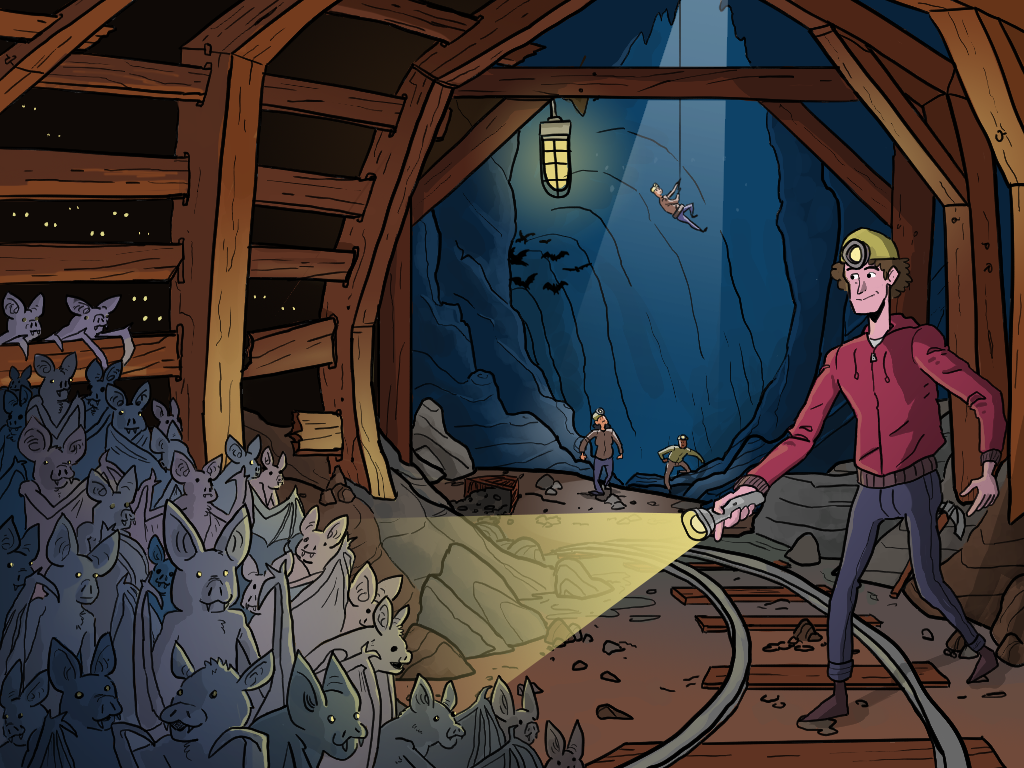Balancing act: Ongoing research aims to protect both bats and people

Bats and hikers in the 1.6-million-acre Mojave National Preserve in southern California are benefitting from an ongoing survey of abandoned mines by a Texas A&M AgriLife Research scientist.
Michael Morrison, professor and Caesar Kleberg Chair in Wildlife Ecology and Conservation for the Department of Rangeland, Wildlife and Fisheries Management at Texas A&M University, started surveying mines in the Mojave Preserve eight years ago. His primary interest has been surveying bat species that use the mines as seasonal shelter.
In addition to the survey, Morrison monitors bat populations at various locations within the preserve as part of his research. Over the years, he also has participated in statewide assessments of Texas bat species and populations and spent time researching bats in other states like New Mexico and Nevada.
“I tell people I spend more time underground than above ground,” he said. “It’s a management mission because these agencies and organizations don’t have the funding or expertise to produce this type of survey.”
Morrison partnered with the National Park Service, NPS, and Texas A&M Natural Resources Institute, NRI, in a mutually beneficial program that provides research data. It also provides the NPS with information related to thousands of abandoned mines and exploratory holes in the preserve created during the rush for precious metals like silver, gold and iron ore.
Various birds, bats, rodents and other wildlife live in and around the man-made structures, Morrison said. But most of these mines are accessible by the public at their own peril. NPS hopes to balance public access and safety with habitat protection.
“Many of these areas have very little wildlife benefit and are safe for the public,” he said. “They are left alone. My primary focus is locating sites that are used by wildlife during critical seasonal activities like hibernation or breeding and providing surveys that help direct conservation. But I also report potential hazards they might want to look at.“
Morrison surveys mines, mine shafts and exploratory shafts to help the NPS determine whether bats and other wildlife utilize them. These mines and shafts may be sealed or gated based on his surveys and other inspections by the NPS to identify potential safety hazards for preserve visitors.
For instance, if a mine serves no use to wildlife and reveals safety hazards, such as vertical shafts a hiker might fall down, the entrance could be sealed. If site surveys reveal seasonal populations of bats utilize a mine and the shaft contains features that could be dangerous to trekkers, the entrance is blocked with a gate that continues to allow bats and other wildlife to move freely, Morrison said. A mine could also be closed if visitors can access spaces utilized by bats and possibly interrupt seasonal bat activity.
“These are public lands, and the agencies want them to be accessible,” he said. “But the managers have to consider public safety along with the habitat use by wildlife. My surveys help them balance their decisions. But for my research, these surveys and having access to these locations to monitor the various species is invaluable.”

